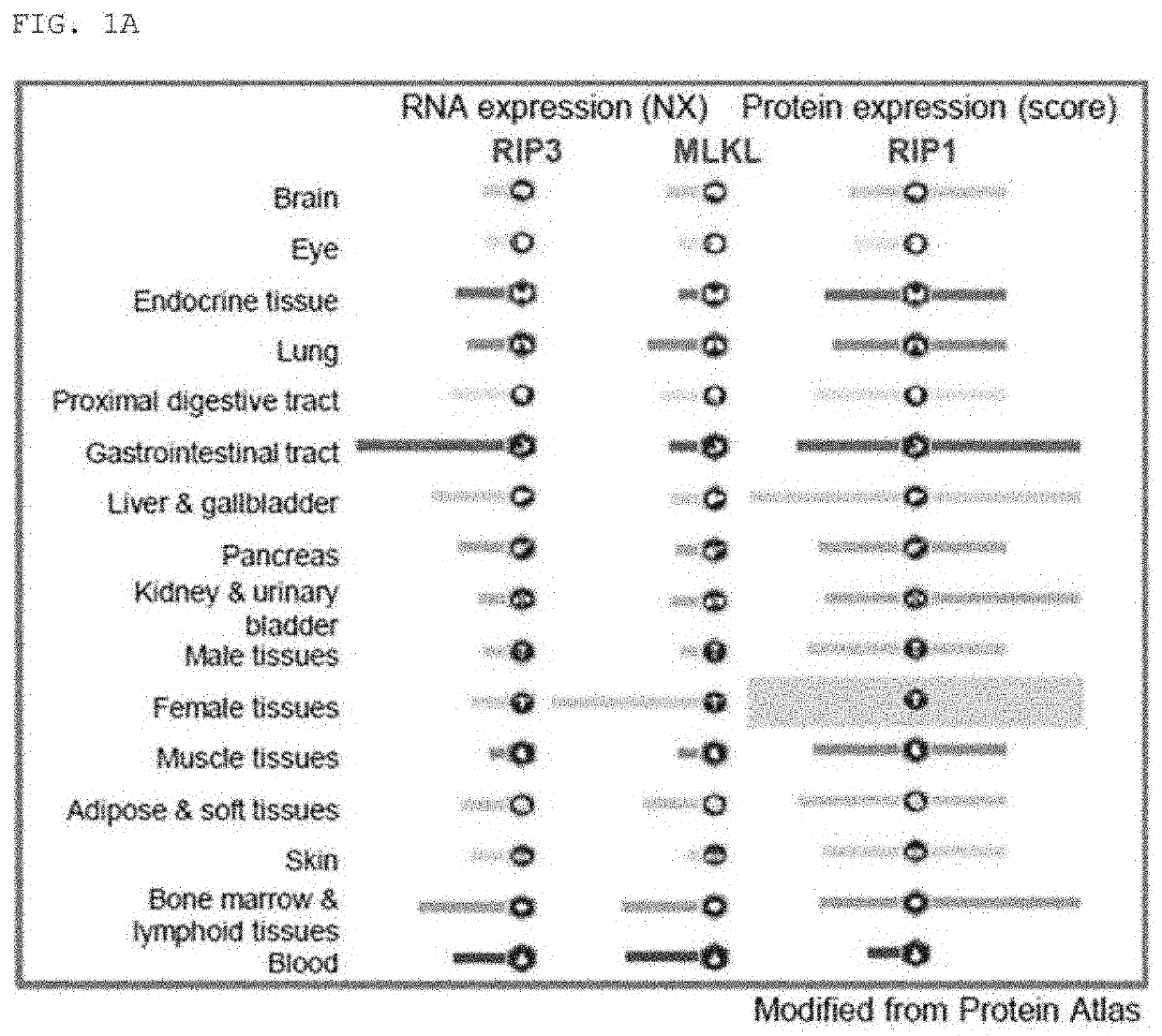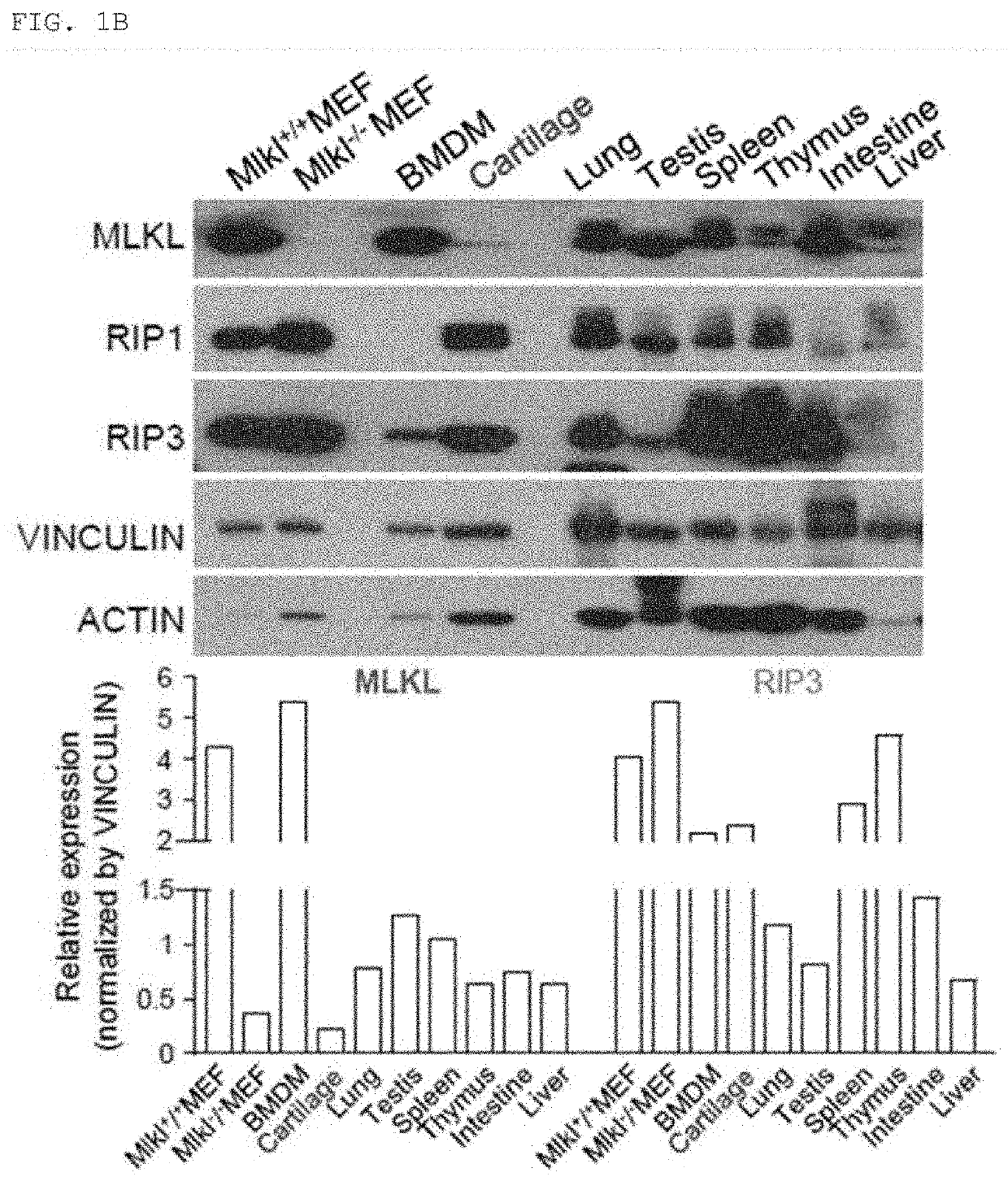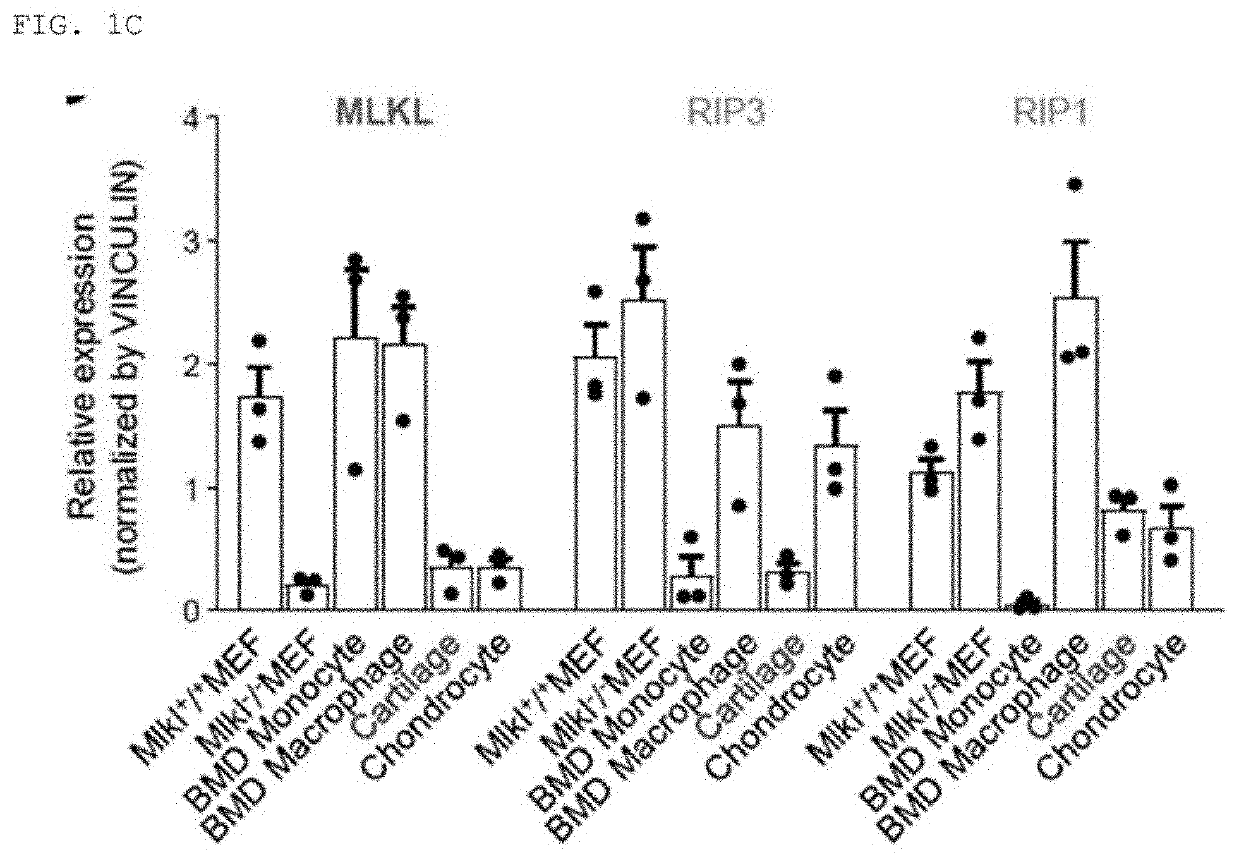Early detection marker for degenerative osteoarthritis with trim24-rip3 axis
- Summary
- Abstract
- Description
- Claims
- Application Information
AI Technical Summary
Benefits of technology
Problems solved by technology
Method used
Image
Examples
example 1
tal Method
[0090]1-1. Construction of Human Osteoarthritis Samples and Experimental Osteoarthritis Mouse Models
[0091]Human cartilage samples were obtained from individuals 63 to 80 years old who had undergone total knee arthroplasty (Table 1). All patients provided written informed consent, and sample collection was approved by the IRB of the Catholic University of Korea (UC14CNSI0150).
[0092]Male C57BL / 6 and Rip3− / − mice (C57BL / 6; Dr. V. M. Dixit, Genentech, San Francisco, USA) were maintained according to the guidelines of the Institutional Animal Care and Use Committee, which approved all animal procedures at the Laboratory Animal Research Center of Ajou University.
TABLE 1Age / ICRSaWeightHeightBMIbNo.gendergradeJoint(kg)(m)(kg / m2)Use165 / F4Knee1585321.23IHC / qPCR280 / F4Knee143.355.126.83IHC / qPCR372 / F4Knee1656523.88IHC / qPCR463 / F4Knee1525222.51IHC / qPCR569 / F4Knee1516026.31IHC / qPCR673 / F4Knee153.870.7529.89IHC763 / F4Knee15672.229.67IHC873 / F4Knee1548335IHC975 / F4Knee1545523.19IHC1063 / F4Knee163...
example 2
on Between RIP3 Overexpression-Mediated Gene Expression Pattern Change and Osteoarthritis
[0116]In order to investigate the role of necroptosis in cartilage degeneration, RIP3 and MLKL expression patterns in various mouse tissue samples were measured. RIP3 expression did not differ significantly between tissues, but MLKL expression was extremely low in cartilage (FIGS. 1A and 1B) and in primary mouse articular chondrocytes which are the predominant cell type in cartilage (FIGS. 1C and 2A). Low MLKL expression was not due to protein insolubility, constitutive protein turnover, or protein stability, because proteasome (MG132) or lysosome (CQ, E64d / Pep A) inhibitors did not change the MLKL protein levels (FIGS. 1D and 1E). Necroptotic stimuli (TNFα+zVAD+SMAC mimetic; TSZ) may activate RIP3, which phosphorylates MLKL to induce necroptosis. After TSZ treatment, MLKL phosphorylation was strongly detected in mouse embryonic fibroblasts (MEFs) but not in chondrocytes (FIG. 2B; FIGS. 1F and 1...
example 3
n of Osteoarthritis Pathogenesis by RIP3
[0120]MMP3, MMP13, ADAMTS4 and ADAMTS5 are known to play an important role in osteoarthritis pathogenesis, and Cox2 is mainly involved in inflammation and eventually leads to cartilage matrix degradation by activation of collagenase and aggrecanase. In order to investigate the association between elevated RIP3 expression and osteoarthritis pathogenesis, the present inventors identified the expression of upregulated catabolic factors (MMP3, MMP13, COX2 and ADAMTS4) and downregulated anabolic factors (Col2a1 and Aggrecan) in articular chondrocytes (FIGS. 4A to 4C; FIGS. 5A and 5B), and these genes are all known to disrupt cartilage in osteoarthritis. MMP3 and MMP13 have collagenase activity, and Adamts4 and Adamts5 mainly function as aggrecanase 1 and 2, respectively. The present inventors found that aggrecanase and collagenase activities were upregulated by Ad-Rip3 infection (FIG. 4D). Consistent with the findings for chondrocytes, Ad-Rip3 indu...
PUM
| Property | Measurement | Unit |
|---|---|---|
| Level | aaaaa | aaaaa |
Abstract
Description
Claims
Application Information
 Login to View More
Login to View More - R&D
- Intellectual Property
- Life Sciences
- Materials
- Tech Scout
- Unparalleled Data Quality
- Higher Quality Content
- 60% Fewer Hallucinations
Browse by: Latest US Patents, China's latest patents, Technical Efficacy Thesaurus, Application Domain, Technology Topic, Popular Technical Reports.
© 2025 PatSnap. All rights reserved.Legal|Privacy policy|Modern Slavery Act Transparency Statement|Sitemap|About US| Contact US: help@patsnap.com



